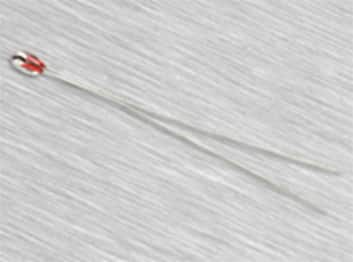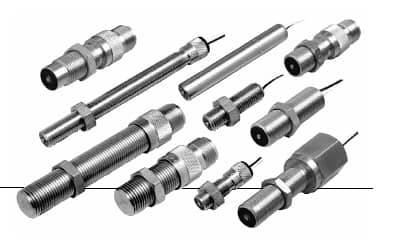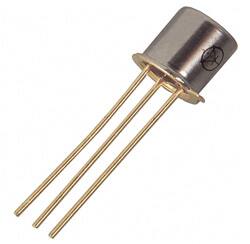Sensors and Severe Conditions
投稿人:电子产品
2013-02-07
Sensors are used in extreme conditions where they are tasked with accurate measurement in spite of the harsh environment. Severe conditions, generally speaking, include extremes of temperature, pressure, shock, radiation, and the presence of chemically corrosive liquids and gases.
Within these unfriendly conditions, the main objective and challenge is to place the sensor close enough to what is being measured to achieve a high degree of accuracy and reliability. Other critical considerations are the materials the sensor is made from, the range of temperature, pressure, or shock at which each sensor can operate, and what failure rates exist as a result of extreme exposure. When compared with sensors in more benign settings, these sensors represent high potential costs with regard to replacement, maintenance, and system downtime.
The key question, then, is how can sensors be protected as they inch closer to the target to be measured? Often it is sealed packaging that enables sensors to deal with harsh conditions. For example, U.S. Sensor's NTC Thermistors (Figure 1) are radial leaded and glass encapsulated to provide long-term reliability and fast response time. Hermetic construction allows them to withstand severe conditions such as temperatures up to 300°C. These sensors are designed for use in industrial, consumer, HVAC, and telecom applications.

Figure 1: Hermetically sealed, U.S. Sensor's NTC thermistors withstand severe environmental conditions and temperatures to 300°C.
Other routinely harsh environment applications where rugged sensors are employed include geothermal, oil and gas, aircraft and automotive engines, military/aerospace, food and beverage, and industrial uses. For most of these applications, we see high and low temperatures, as well as corrosive and chemical agents. As a result of these extremes, costly and constant inspection, maintenance, and evaluation are the norm.
Today’s sensors provide greater diagnostic capabilities to monitor, measure, and evaluate than ever before. An example of a high resolution, high temperature, and hazardous application sensor is the Industrial VRS Magnetic Speed Sensor by Honeywell (Figure 2).

Figure 2: High-output industrial VRS Magnetic Speed Sensors by Honeywell.
These sensors can be used in a wide range of applications including harsh conditions. They perform best at low to medium speeds with medium- to high-impedance loads. Front-end sealed versions can be used when the sensor is exposed to fluids, lubricants, or other adverse environmental conditions. The simple, rugged devices do not require external voltage for operation. A permanent magnet in the sensor establishes a fixed magnetic field. The passing of a ferrous metal target near the sensor's pole piece changes the flux lines of the magnetic field, dynamically changing its strength.
Potential applications include:
- Engine RPM (revolutions per minute) measurement on aircraft, automobiles, boats, buses, trucks, and rail vehicles
- Motor RPM measurement on drills, grinders, lathes, and automatic screw machines
- Motor RPM measurement on precision camera, tape recording and motion picture equipment
- Process speed measurement on food, textile, paper, woodworking, printing, tobacco, and pharmaceutical industry machinery
- Speed measurement of pumps, blowers, mixers, exhaust, and ventilating fans
- Flow measurement on turbine meters
- Wheel-slip measurement on autos and locomotives
- Gear speed measurement
From jet engines to food wash down
Not only temperature and corrosive agents, but also shock, vibration, and EMI/EMP interference demand a new breed of rugged sensors and new materials to make them. For example, in jet engine testing, pressure sensors must accurately measure pressure inside engine combustion chambers. New silicon carbide (SiC) pressure sensors can be inserted in close proximity to the sensed environment, eliminating the accuracy and information loss challenges. SiC is a high-band-gap semiconductor material exhibiting good mechanical strength, high thermal conductivity, a high melting point, and high inertness to exposure in a corrosive environment. Devices manufactured in SiC are more robust and can operate at higher temperatures and in a harsher environment compared to their silicon counterparts. Their use in MEMS is very promising in particular to build physical and chemical sensors.
Based on NASA-influenced technologies, SiC-based pressure sensors can operate for over 130 hours at 600°C. Amazingly, the sensors are often less complex than their predecessors, resulting in less performance failure, inexpensive manufacturing, and reduced system maintenance needs.
Harsh-environment sensors are being designed to address specific end-use conditions. For example, high-pressure sensors are required in food and beverage manufacturing, where high-temperature wash downs are performed at high pressure using hot water or cleaning chemicals. In this environment, stainless steel is preferred over other materials that can rust or degrade over time. This same industry requires a broad temperature range given the potential for use in both extreme cold and hot environments where sensors need to operate at such ranges as –60°C and 260°C.
The OP800SL series devices by TT Electronics/Optek Technologies (Figure 3) consist of an NPN silicon phototransistor mounted in a hermetically sealed package. The TO-18 packages offer high power dissipation and superior hostile environment operation.

Figure 3: TT Electronics/Optek Technologies' OP800SL NPN silicon phototransistor.
Features include a variety of sensitivity ranges, enhanced temperature range, and a TO-18 hermetically sealed package.
In conclusion
Today's sensor solutions are smaller, more rugged and reliable, and provide greater sensitivity, superior temperature range, and faster response times than their predecessors. Sensors and modules are now available to address extremely elevated pressure and temperatures, acid attack caused by high sulfur content, high humidity applications, high dust applications, and even explosive dust and gas conditions. Applications using such sensors are rapidly expanding, prompting even greater technology advances.
For more information on the sensors mentioned use the links provided to access product pages on the DigiKey website.
免责声明:各个作者和/或论坛参与者在本网站发表的观点、看法和意见不代表 DigiKey 的观点、看法和意见,也不代表 DigiKey 官方政策。









